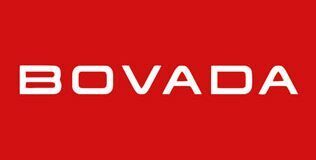Different Ways to Bet on Horse Racing
Betting on horse racing doesn’t have to be all about trying to making money, it can also be about having a bit of fun. Even wagering just a small amount of money on the outcome of a race makes watching that race much more exciting.
This is probably why most people who attend a horse racing meeting end up having a few bets even if they don’t usually gamble.
Some people, however, are reluctant to bet on horse racing as they expect it to be really complicated. In actuality it’s really quite simple.
It is true that there are a lot of different wagers that you can place but you don’t actually have to understand them all just to bet on a race. What it does help to understand, though, is the different ways you can bet on horse racing.
These are fixed odds betting, parimutuel or tote betting, and exchange betting. We have explained each of these in detail on this page. Trifecta betting is covered here.
Fixed Odds Betting
Fixed odds betting is the term for placing wagers with a bookmaker at agreed odds. Basically you make your selection, such as which horse will win a specific race, and the bookmaker you’re betting with will give you odds for your wager.
You pay your stake at this point. If your selection turns out to be correct then you’ll be paid out based on a combination of whatever odds you got and the amount you staked. If your selection is not correct then the bookmaker keeps your original stake.
With fixed odds betting you know how much you can win at the time of placing your bet, with one exception. Sometimes you may have to take what is known as the starting price (SP). This means that you’re not getting agreed odds at the time of placing your wager, but rather are taking whatever the odds happen to be when the race starts.
There are three ways that bookmakers can express the odds for a wager– fractional odds, decimal odds, and moneyline odds.
As a general rule, fractional odds are used in the United Kingdom, decimal odds are used in Europe, Canada and Australia, and moneyline odds are used in the United States. However, any bookmaker can use any odds format it chooses to, so it’s a good idea to understand how the different methods for quoting odds work.
Let’s use 2/1 as a simple example. This is said as “two to one”, as you will make $2 for every $1 staked on a winning wager.
So if you staked $10 at 2/1 and your wager won, you would receive a total of $30 back. $20 in winnings (2 multiplied by your $10 stake) and your original $10 stake.
If you’re betting with fractional odds you need to be familiar with the terms “odds on” and “evens”. With an odds on wager, the amount you can win is less than your stake. You get your stake back too so you still make a profit, but your actual profit will be less than your stake.
A clear favorite in a horse race could well be odds on, for example 2/5. This would be said as “five to two on”, and means you would win $2 for every $5 staked. So a $50 winning at odds of five to two on would return a total of $70 ($50 stake plus $20 winnings).
Evens is the term used for when the odds are 1/1. A winning wager at these odds will return winnings equal to your stake, plus your original stakes of course. So you would basically double your money. If you stake $20 at evens and won, you get a total of $40 back – your original $20 stakes plus $20 in winnings.
They show you how much a winning wager will return in total per unit staked, including your original stake, and are usually quoted to two decimal places.
Let’s use another simple example and say you staked $10 at odds of 3.50. If you won, your total return would be $35 (3.50 multiplied by your $10 stake), which is made up of $25 in winnings and your original $10 stake. With decimal odds, 2.00 is the equivalent of evens and anything less than 2.00 is odds on.
Moneyline odds are also known as American odds. They can seem a bit complicated but once you understand how they work they’re quite easy to work out. These odds are quoted as either a positive number or a negative number.
For example, a winning wager of $100 placed at odds of +200 would return a total of $300 (your original stake plus $200 in winnings). A winning wager of $100 placed at odds of -200 would return a total of $150 (your original stake plus $50 in winnings.
Negative odds are therefore the same as odds on. Odds of +100 are the same as evens.
Something else we should mention is ante-post betting, also known as futures betting. This is a form of fixed odds betting where you place your wagers weeks, or even months, before a race takes place.
When placing wagers far in advance of a race there is the added risk that your selection will not actually run, so you typically get better odds for this type of bet to reflect that.
To place fixed odds wagers you need to use the services of a bookmaker. There are bookmakers at most racecourses and in many countries you can bet on horse races in a betting shop or over the telephone too. These days, though, the easiest way to place your wagers is online.
Parimutuel or Tote Betting
Parimutuel betting is also known as Tote betting and is quite different from fixed odds betting. You make your selections in the same way but there are no odds involved and you are not betting against a bookmaker.
At the end of that race, the pool is divided up among all those that placed a winning wager according to how much they staked.
Your winnings are therefore determined by three factors – how much you staked, how much in total was staked on the race, and how many people placed a winning wager. It should be noted that a percentage of each pool is retained by the company involved.
Some of this will be for their profits and some will be for tax purposes. They may also have to pay a levy of some kind to the relevant horse racing authority.
There are several parimutuel betting companies in existence. Some of these operate only at a specific racecourse and some only in a particular region. Some of them also operate on a worldwide basis.
At a few racecourses you’ll find that parimutuel betting is your only option, although you can typically expect there to be some on course bookmakers that take fixed odds bets too.
Exchange Betting
Exchange betting is a relatively new way to bet on horse racing. It’s been made possible thanks to the introduction and subsequent growth of online betting exchanges such as Betfair. This is essentially peer to peer betting, where you place wagers with other individuals rather than with a bookmaker.
The basic premise is that you choose your selection, set the odds and the stake you want and then your wager will get matched with someone who wishes to take the opposite position.
One great advantage that exchange betting offers is that you can choose to lay a horse in a race. When you lay a horse you’re basically betting that it won’t win, something which is much easier to get right than picking which horse actually will win.
 75%
75% 80%
80%
